Search Images
Browse Content (p. 1453)

Image
Daedalus & Pasiphaë
A Roman wall painting depicting Daedalus and Pasiphaë, wife of King Minos of Crete. In Greek mythology, Daedalus made the queen a wooden bull so that she might wait inside it to attract the attention of a bull she was in love with. The offspring...

Image
Daedalus & Icarus
A 17th century CE painting of Daedalus and Icarus by Jacob Peter Gowy. (Museo del Prado, Madrid)

Image
Greek Diplomatic Mission
An artist's rendition of what a diplomatic mission may have looked like in the ancient Greek world.

Image
Seleucus I Nicator
Portrait of Seleucus I Nicator ( Victor), one of the successors to the kingdom of Alexander the Great upon his death in 323 BCE. This portrait is Roman and is dated to the 1st or 2nd century CE. It was found in Syria. (Louvre Museum, Paris)

Image
Metope with Pyrrhus in Battle
Found at Tomb I, Via Umbria, Taranto, Italy. This metope from the late 3rd to early 2nd century BCE decorated a temple-like tomb in the tradition of Macedonian kings and borrowing imagery from Alexander the Great's depictions. The horseman...
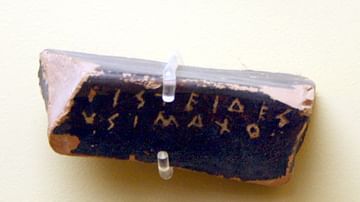
Image
Ostrakon for Aristides
A pottery sherd (ostrakon) used in the Athenian political process of exile known as ostracism. This piece bears the name of Aristides, who was ostracised in 483 BCE. (Agora Museum, Athens)
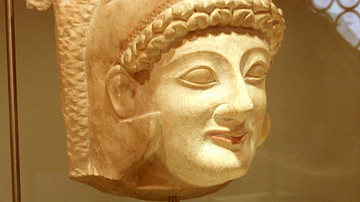
Image
Hercules-Melqart
A painted limestone bust of Hercules-Melqart. Cyprus, 5th century BCE. The god was an amalgamation of the Greek hero Hercules and the Phoenician god Melqart. (Museo Barracco, Rome)
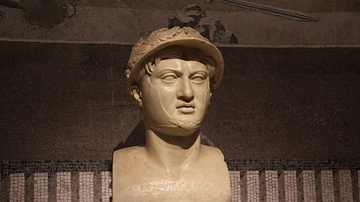
Image
Pyrrhus of Epirus
This Roman marble bust from c. 50 - 25 BCE is a copy of a Hellenistic statue made in 290 BCE. It depicts Pyrrhus king of Epirus, best known today for the phrase "Pyrrhic victory." It is currently housed at the Metropolitan Museum of Art...
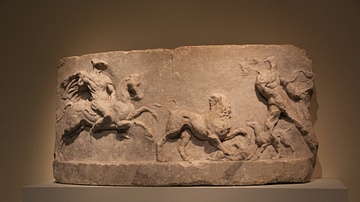
Image
Relief of Alexander the Great Hunting a Lion
This relief may depict Alexander with the lion skin of Hercules, fighting a lion on foot. His friend Krateros (on horseback) rescues him. The lion hunt is a common image in Near Eastern art. This relief formed part of the base of a statue...
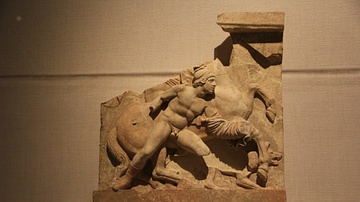
Image
Hellenisitc Hunting Scene
This decorative limestone tomb frieze, dating to c. 290-250 BCE, shows two hunters attacking an animal. Hunting was an important ritual in Macedonian coming-of-age rituals during this period. The piece is currently housed at the Metropolitan...